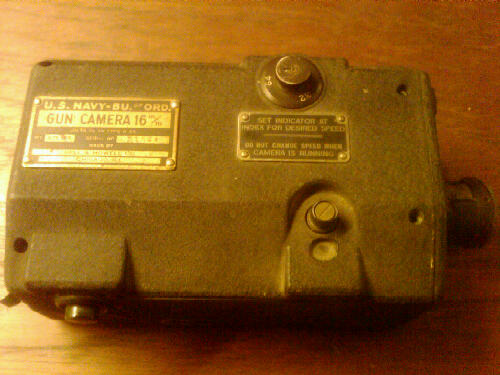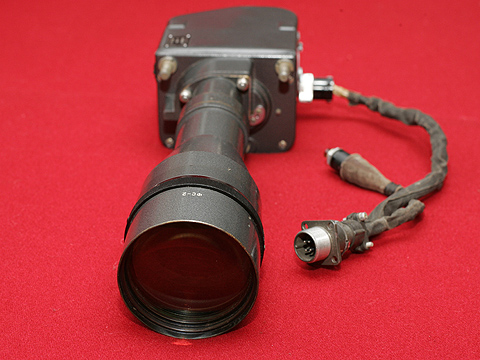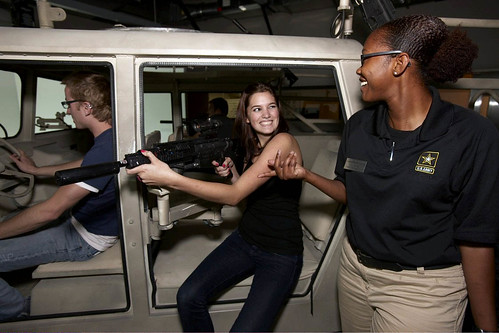Women in games: A mini guide to working and thriving in the video game industry
Originally published* on Current.com in July of 2012.
By Daniela Capistrano / @dcap
“The single most important thing you can do [to break into the industry] is to make games – even if it’s a mod of a game that you love. Get together with other people and build a game.”—Amy Jo Kim, CEO at ShuffleBrain and Game Designer, Author and Educator
So, you’re a girl and you love video games: twenty years ago this would have been unusual but today almost everyone in the U.S. is a gamer: a 2011 survey indicated that 72 percent of households play video games and the number is growing. A 2013 study revealed that women comprise 45% of the gamer population. Women 18 or older represent a significantly greater portion of the game-playing population (31%) than boys age 17 or younger (19%).
The struggle: why few women go from gamer to creator
Unfortunately the video game industry is remarkably less diverse; The Boston Globe reports that women account for only 11 percent of game designers and 3 percent of programmers. Gender discrimination still exists both in how games are made and who gets to make them. Not only do we need more female characters in video games, we need more women and girls to create games.
Women still struggle with making a living and being respected in the video game industry. A 2012 Twitter discussion among women working in games (#1reasonwhy) pointed out that sexist practices, workplace harassment and unequal pay for men and women was common.Â
There is, after all, a reason that #1reasonwhy is still a relevant hashtag. 
— Robin Burks (@sunriserobin) March 5, 2014
There’s a 27 percent gap in average incomes, with women making $68,062 versus men at $86,418, according to Game Developer Magazine’s 2011 annual salary survey.
More roles for women in games
Men historically have had more influence within the industry, but the culture is changing. Female programmers are in demand and more women are taking advantage of video game design programs at universities across the nation. Reuters reports that the number of women hired by game companies has tripled since 2009, according to recruiting firm VonChurch.
To find out what it takes to succeed in the video game industry, Daniela Capistrano spoke with some of the leading women in video games. The result is this mini guide for girls and women of all ages who want a career making and contributing to gaming culture.
If you’re a guy and you stumbled across this, welcome! There’s plenty of relevant information here for you too.
DISCLOSURE: Despite its length, this article full of industry tips and online resources is called a mini guide because it only represents a third of what Daniela uncovered. To unhide all the goodies hidden within this guide, click the “show/hide” buttons.
The beginning: prepare yourself for a job in the industry
Women of all backgrounds have the opportunity to thrive in the video game industry while changing the way that women and people of color are represented in games – but they need the skills, personal habits and networks that will support their career goals.
Students: Do not believe the myth that boys are better than girls in STEM (Science, Technology, Engineering and Math) – it’s not true. While STEM skills are helpful in the video game industry and female programmers are needed, you don’t need to know how to code to work in video games (but consider learning anyway!).
If you want to make video games, start doing it now and teach yourself about the video game industry. Find ways to make learning fun and practice your developing talents. The path to a successful career in video games (regardless of gender) is similar to what’s required in most industries: being self-motivated, asking questions, learning/applying the necessary skills and finding peers and working professionals willing to offer guidance and mentorship.
We’ll explore how to do all these things further in this mini guide.
College grads and women in other industries: Don’t be discouraged if you didn’t excel at STEM in school, don’t know how to code or don’t have a degree in Computer Science. If you are passionate about video games and want to work in the industry, there are many opportunities for you to apply the skills you’ve attained through other work experiences.
If a kid can make games, so can you (watch this inspiring clip of Globaloria students)!
Some video game positions require more advanced technical skills than others, but all require the commitment to understanding how the industry works, where it’s headed and what you’re best suited to do to support the creation of video games.
“As an industry we’re very male centric but that is changing … I’ve heard people make arguments against why it’s important to have women in the industry. I counter with this: why would diversity make the industry worse? Different perspectives within games – and within actual game creation – is nothing but a good thing.” – Shana T. Bryant, Senior Associate Producer at Capcom
Not sure where to start? Get inspired!
Learn more about what your options are by studying the people who are already excelling in the industry. Here are three women with impressive careers in video games who are leading innovation:
Six tips to help you attain your dream job
Designer. Programmer. Developer. Producer. Artist. You might be familiar with these roles. but if they don’t appeal to you, it doesn’t mean that you can’t have a career in video games.
1. Be curious and optimize your distractions.
“I always let myself be curious – even get distracted – when something moves me. I follow blogs on strange photography, infinity and fractals, bizarre fashion trends; things that foster different emotions. When I design, I always start with emotions, sensations, revelations – what do I want players to feel, see, learn? I love paradox and juxtaposition, anything that forces your brain to think in a new way or make unexpected connections. I love going out to quiet places: parks and natural settings. Whenever my throat gets tight – something literally takes my breath away – then I know I should capture or try to understand it. Good game design revolves around creating evocative experiences.“ – Chelsea Howe, Director of Design at SuperBetter Labs
More thoughts on how curiosity informs skill-building:
“I still constantly play games and evaluate all the new platforms. I started on the Apple II and the latest platforms are social networks, ios devices and tablets – intellectual curiosity. I remember when I first started playing Facebook games in 2007 and 2008, being fascinated with asynchronistic gameplay with people. It was really intellectually fascinating to me, this new demographic.†– Brenda Garno Brathwaite, Loot Drop co-founder and award-winning game designer and author
“There was no career path laid out, no game design major or a graphical interface for the Internet when I started. I just kept asking questions and finding resources. One of the things you can use social media for is to learn something. Don’t just use it for chatting with friends. If you want to find game designers, look them up online or on Facebook, send them an email. They are surprisingly open to helping people who have a passion for something, who are asking questions and reaching out.†– Shannon Sullivan, VP, Programs and Production at World Wide Workshop


 Mark III Hythe Machine Gun Camera, 1915
Mark III Hythe Machine Gun Camera, 1915 (via
(via  (via
(via 

